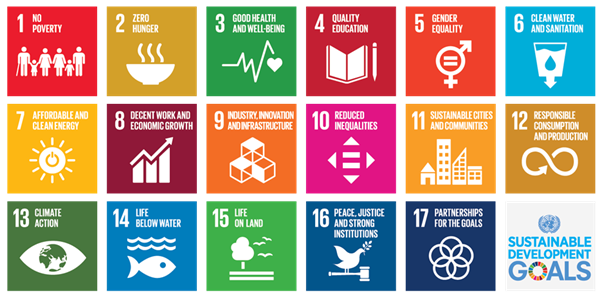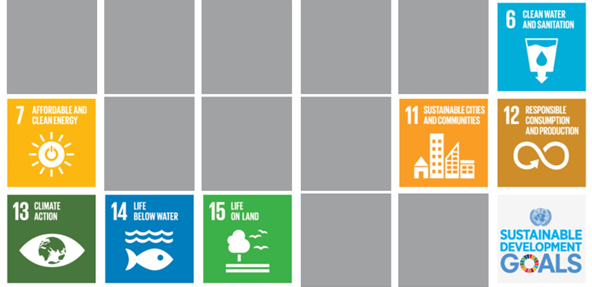India’s Path to Sustainability and a Greener, More Inclusive Future
ESG stands for Environmental, Social, and Governance, which are three key factors used to measure the sustainability and ethical impact of investments and business practices. Companies and investors are increasingly taking ESG factors into account when making decisions, as there is growing recognition of the need to operate in a way that is environmentally responsible, socially inclusive, and well-governed.
SDGs, on the other hand, refer to the United Nations’ Sustainable Development Goals, which are a set of 17 goals aimed at achieving sustainable development and improving the quality of life for all people around the world. The SDGs cover a range of issues, including poverty, hunger, health, education, gender equality, clean water and sanitation, renewable energy, and climate action.
In the Indian scenario, there is growing recognition of the importance of ESG and SDGs, and the government and companies are taking steps to promote sustainable development and reduce the environmental and social impact of economic activities. For example, the Indian government has launched several initiatives aimed at achieving its SDG targets, such as the Swachh Bharat Abhiyan (Clean India Mission) aimed at promoting cleanliness and hygiene, and the Skill India Mission aimed at providing vocational training to youth.
Similarly, companies in India are increasingly incorporating ESG factors into their decision-making processes, with many of them setting targets for reducing their carbon footprint, promoting gender diversity, and improving their social impact. There is also a growing trend of impact investing in India, where investors seek to generate financial returns while also making a positive impact on society and the environment.
Overall, there is a growing recognition in India of the need to promote sustainable development and achieve the SDGs, and there are many initiatives underway to achieve these goals. However, there is still much work to be done, and ongoing efforts are needed to ensure that economic growth is inclusive, environmentally sustainable, and socially responsible.
India’s ESG Goals
India has set several environmental, social, and governance (ESG) goals aimed at achieving sustainable development and reducing the impact of economic activities on the environment. Here are some of the key ESG goals of India:

- Climate Change Mitigation: India has committed to reducing its greenhouse gas emissions intensity by 33-35% by 2030, compared to 2005 levels. It has also set a target of achieving 175 GW of renewable energy capacity by 2022 and 450 GW by 2030.
- Clean Air and Water: The National Clean Air Programme (NCAP) and the National Clean Energy Fund (NCEF) have been launched to improve air and water quality across the country. The government has also introduced the Jal Jeevan Mission to provide piped water to all households in the country by 2024.
- Sustainable Agriculture: India has launched several initiatives to promote sustainable agriculture practices and increase agricultural productivity. The Pradhan Mantri Fasal Bima Yojana and the Soil Health Card Scheme are some of the programs aimed at improving farm incomes and reducing the environmental impact of agriculture.
- Social Inclusion: The government has launched several programs to promote social inclusion and reduce inequality. The Pradhan Mantri Jan Dhan Yojana aims to provide access to financial services to all households in the country, while the National Health Protection Scheme provides health insurance coverage to vulnerable sections of society.
- Corporate Governance: India has implemented several reforms aimed at improving corporate governance, such as the Companies Act, 2013, which requires companies to disclose their CSR activities and set up a CSR committee.
Overall, India has made significant progress in achieving its ESG goals, but there is still much work to be done to ensure sustainable development and reduce the impact of economic activities on the environment
India’s SDG Goals Related to Environment Sector


The Sustainable Development Goals (SDGs) are a set of 17 global goals adopted by the United Nations in 2015 to achieve a sustainable future for all. India is committed to achieving these goals and has taken significant steps to address various issues related to the environment.
Here are some of the current status and milestones related to the environment sector in India:
Goal 6: Clean Water and Sanitation – In India, around 163 million people do not have access to safe drinking water, and only 40% of the population has access to basic sanitation. The government has launched several programs, such as the Swachh Bharat Abhiyan and the Jal Jeevan Mission, to address these issues and provide clean water and sanitation to all citizens.
Goal 7: Affordable and Clean Energy – India has set a target of achieving 175 GW of renewable energy capacity by 2022, of which 100 GW will come from solar, 60 GW from wind, 10 GW from biomass, and 5 GW from small hydro. The country has already achieved a capacity of 100 GW from renewable sources and is on track to meet its target.
Goal 11: Sustainable Cities and Communities – India’s urban areas face significant challenges related to air pollution, waste management, and access to basic services. The government has launched several initiatives to address these issues, including the Smart Cities Mission and the Swachh Bharat Abhiyan.
Goal 12: Responsible Consumption and Production – India is one of the largest consumers of plastic in the world, and the country generates around 25,940 tonnes of plastic waste per day. The government has launched the Swachh Bharat Abhiyan and the Plastic Waste Management Rules to promote responsible consumption and production and reduce plastic waste.
Goal 13: Climate Action – India has set a target of reducing the emissions intensity of its GDP by 33-35% by 2030, compared to 2005 levels. The country has also launched the National Clean Air Programme to address air pollution and promote climate action.
Goal 14: Life Below Water – India has a long coastline and significant marine biodiversity, but overfishing, pollution, and climate change pose significant threats to marine ecosystems. The government has launched several initiatives to address these issues, including the Swachh Sagar Abhiyan and the National Biodiversity Act.
Goal 15: Life on Land – India has a rich biodiversity, but many species are under threat due to habitat loss and fragmentation. The government has launched several programs, such as the National Biodiversity Act and the National Wildlife Action Plan, to protect and conserve wildlife and their habitats.
Overall, India has made significant progress towards achieving the SDGs related to the environment sector, but there is still a long way to go to achieve the targets by 2030.
